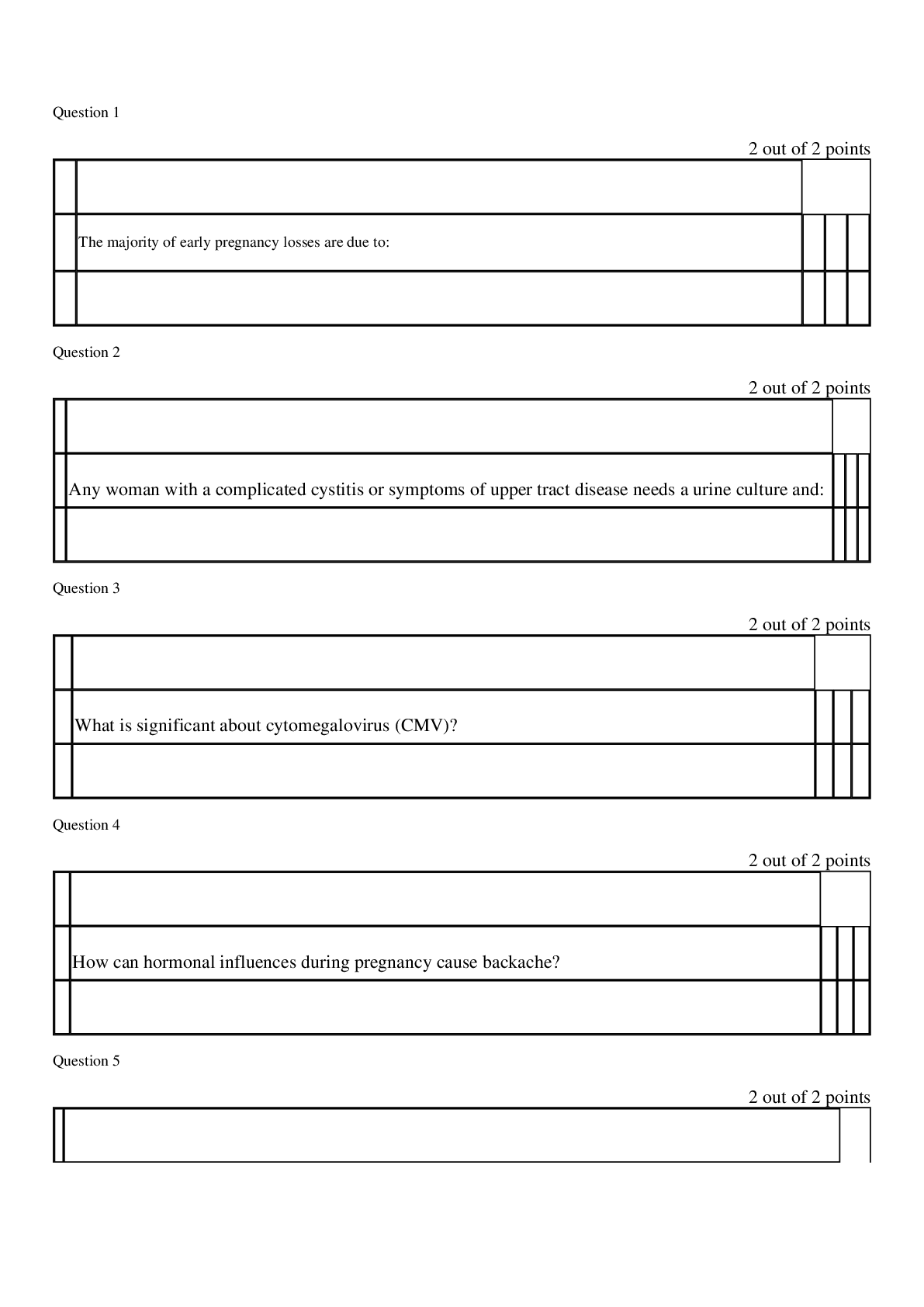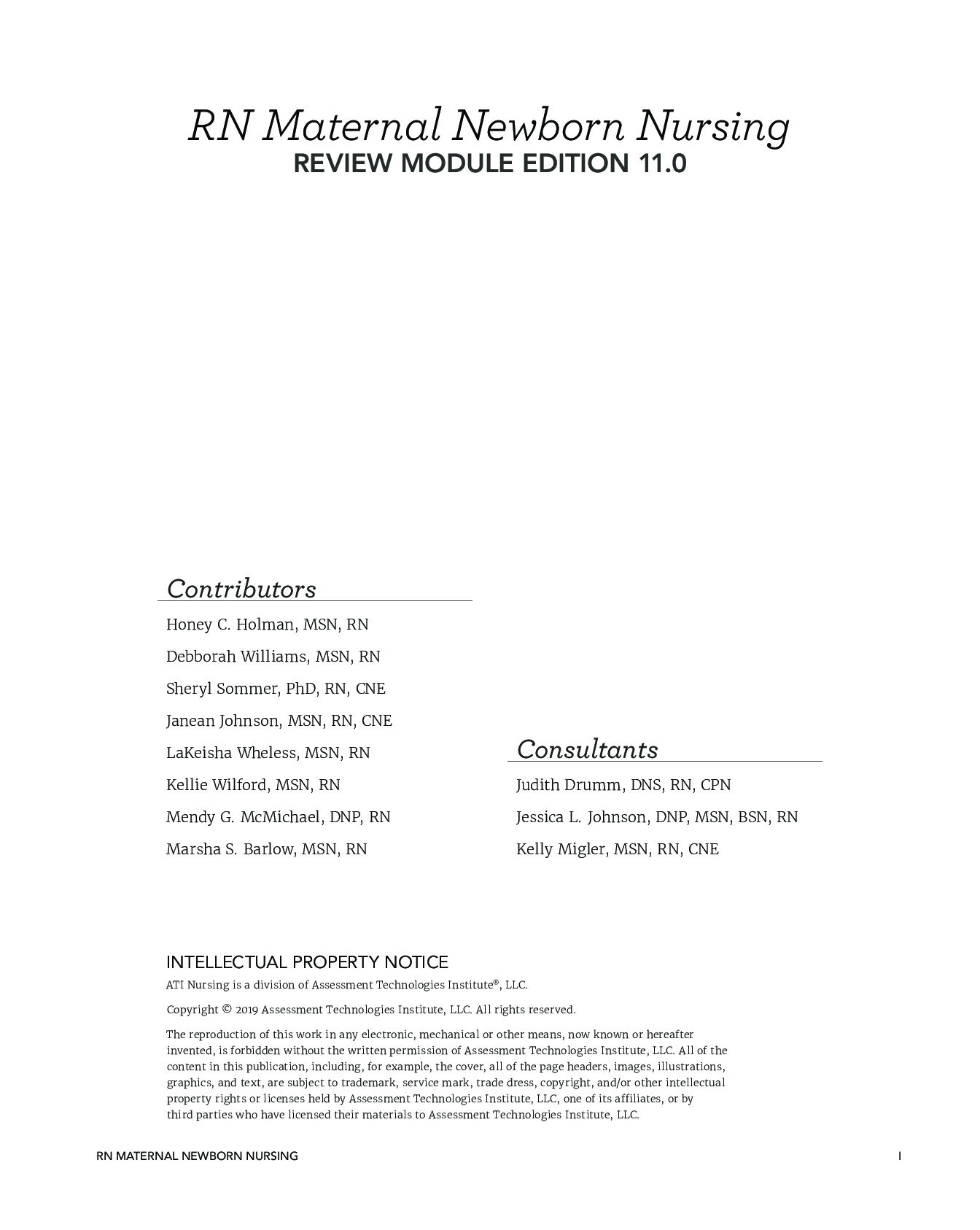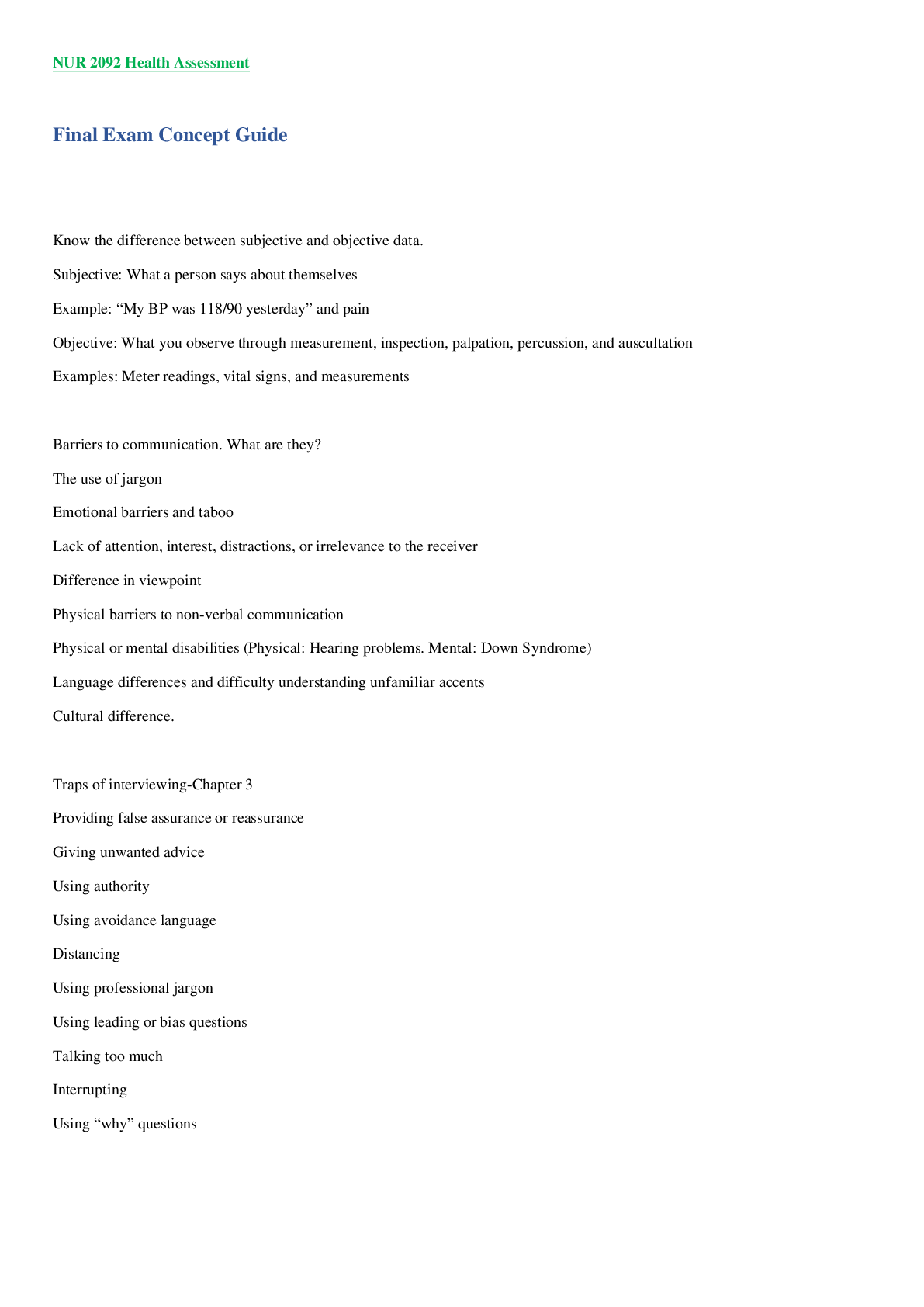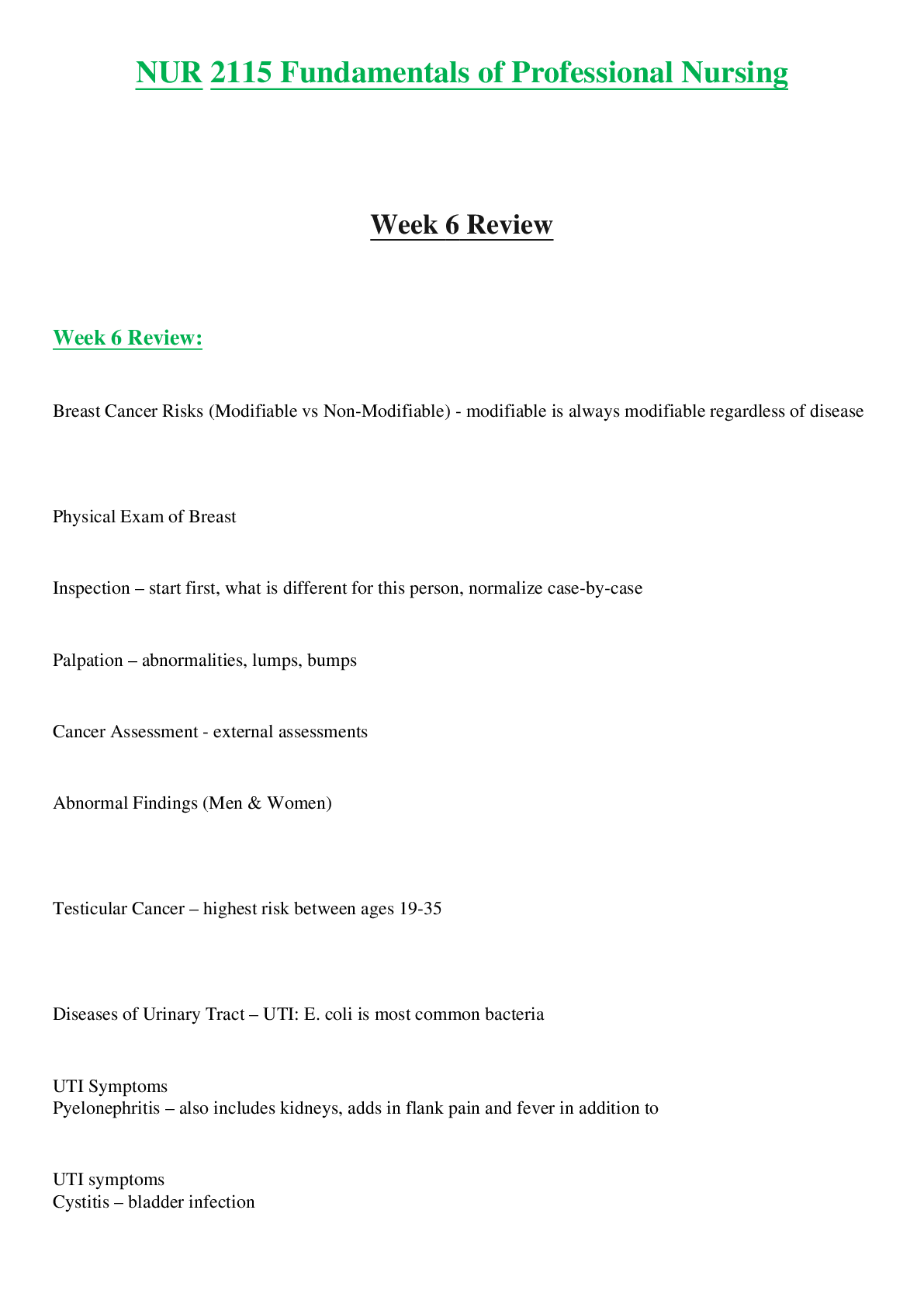*NURSING > STUDY GUIDE > NURS 6660N Week 7 Assignment, Developmental Coordination Disorder.(complete solution) (All)
NURS 6660N Week 7 Assignment, Developmental Coordination Disorder.(complete solution)
Document Content and Description Below
Developmental coordination disorder is a condition that manifests in childhood and is defined as developmental deficiencies “…in the acquisition and execution of coordinated motor skills…mani ... fested by clumsiness and slowness or inaccuracy of performance of motor skills” (American Psychological Association, 2013). These deficiencies in fine and gross motor skills can cause negative effects on the child’s social skills, academic performance, personal achievements, and activities of daily living. This condition is a neurodevelopmental disorder and it is seen in 5 to 6 percent of school age children (Sadock, Sadock, & Ruiz, 2014). PATHOPHYSIOLOGY OF DEVELOPMENTAL COORDINATION DISORDER This Photo by Unknown Author is licensed under CC BY-SA-NC Developmental coordination disorder (DCD) is frequently seen, up to 50%, in children with Attention-deficit/Hyperactivity Disorder (ADHD) or dyslexia. It affects both fine (small muscle movement like writing, or picking-up items), and gross motor skills (large muscle movement like jumping, or walking) (Sadock et al., 2014). The pathophysiology, or cause, of this disorder, is thought to be associated with low birth weight, being premature, or if a parent also had the disorder (genetic link) (Rutter et al., 2008). There may also be a sex-related link, as it is seen more often in boys than girls, and is even more frequently seen in children who begin to walk later than 12-months-old (Harris et al., 2015). Scientific studies have shown that children who have DCD may have an impaired cerebral hemisphere (the part of the brain responsible for muscle function). Which misfires signals to the body’s muscles, causing poor coordination (Vaivre-Douret et al., 2016); or impaired Mirror Neurons of the brain, brain cells which react to impulses, and which are responsible for executing, or carrying-out, those impulses, such as seeing an object, and wanting to pick it up (Lust et al., 2019). In children with DCD, these Mirror neurons don’t fully communicate with the body’s muscles. While no exact cause of DCD has been discovered yet, understanding how the disorder affects your child can help you help them. [Show More]
Last updated: 3 years ago
Preview 1 out of 13 pages

Buy this document to get the full access instantly
Instant Download Access after purchase
Buy NowInstant download
We Accept:

Reviews( 0 )
$15.00
Can't find what you want? Try our AI powered Search
Document information
Connected school, study & course
About the document
Uploaded On
Oct 06, 2020
Number of pages
13
Written in
All
Additional information
This document has been written for:
Uploaded
Oct 06, 2020
Downloads
0
Views
89


























